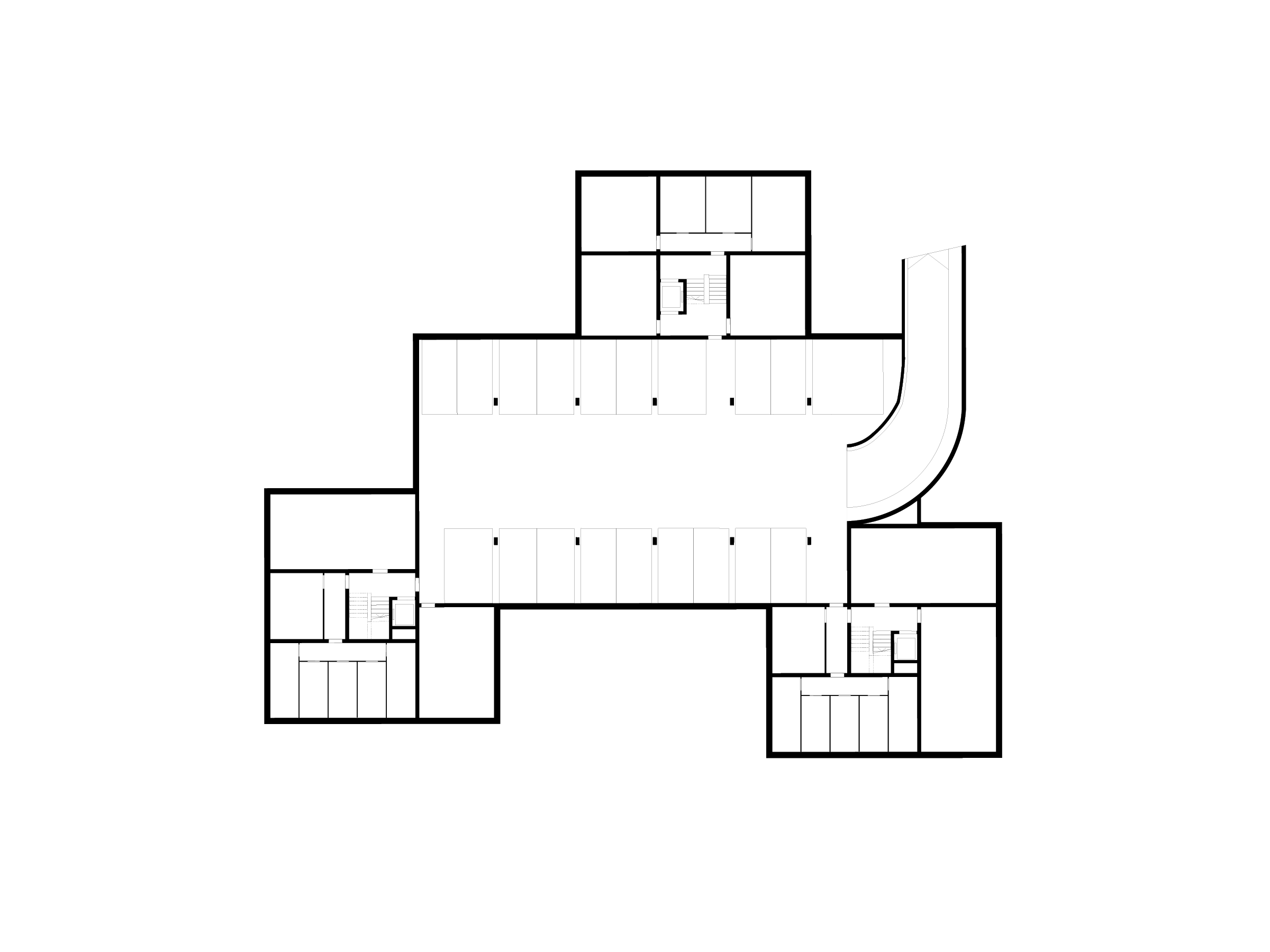The core elements of this residential development concept are composed of three equally sized, self-contained, square buildings. In the expansive garden space, the three 15.80m x 15.80m structures naturally balance one another. Carefully positioned, they offer maximal views of the surrounding landscapes and excellent sun exposure. A meandering path made of reused local granite slabs harmoniously links the three structures, an outdoor patio with a vine-covered arbor offers shade, and an ancient pine tree in the south ornaments the communal green area.
Vegetation comprises native trees, shrubs, and perennials to create a diverse green space that opens the view towards the lake. The covered exterior house entrances create generous spaces that function as vestibules, all leading into a prestigious entry hall. Every entryway is framed by the original granite slabs of the existing house. The foyers and the spacious balconies of each house are arranged in the center of their respective structures, becoming the focal point of the wooden, tectonic facade skin and directing the organization of the square floor plan. An inner staircase with a skylight serves as a nucleus, connecting all of the individual living units.
The kitchens and bathrooms direct the interior flow of space into the living rooms and bedrooms. The floor plan consists of eight equal fields, representing a manifest Bagua. The Bagua is a representation of the eight trigrams that can be applied as a grid pattern, regardless of the respective cardinal direction or orientation of the building site. It divides the floor plan of a building into nine zones, as well as the eight areas of life, ultimately leading into the center, or the Tai Chi.
For the apartment floor plan to be harmonious and correspond to the Bagua, the apartment should ideally be as square as possible and the center should remain open and free. The Bagua areas should all be approximately the same size, and accordingly, the floor plan has windows in all four cardinal directions, as presented in the proposed project.
The designated materials for the three buildings are ecological, high-quality, robust, and durable materials such as wood and concrete. The design proposes a building standard conform with Minergie P, and an ecologically efficient, CO2-reduced overall energy output. A very well-insulated building envelope is central to keeping with ecological standards. The ventilated facade encloses a highly insulated wood element wall, in which selectively positioned concrete columns are integrated. The structures in direct contact with the earth, such as the parking garage,basement rooms, stair cores, ceiling slabs, and concrete columns, are made of recycled or reprocessed concrete. Other archaically timeless materials such as terrazzo, plaster, and breathable, moisture-active clay surfaces are also implemented to maintain the sustainability of the design.




